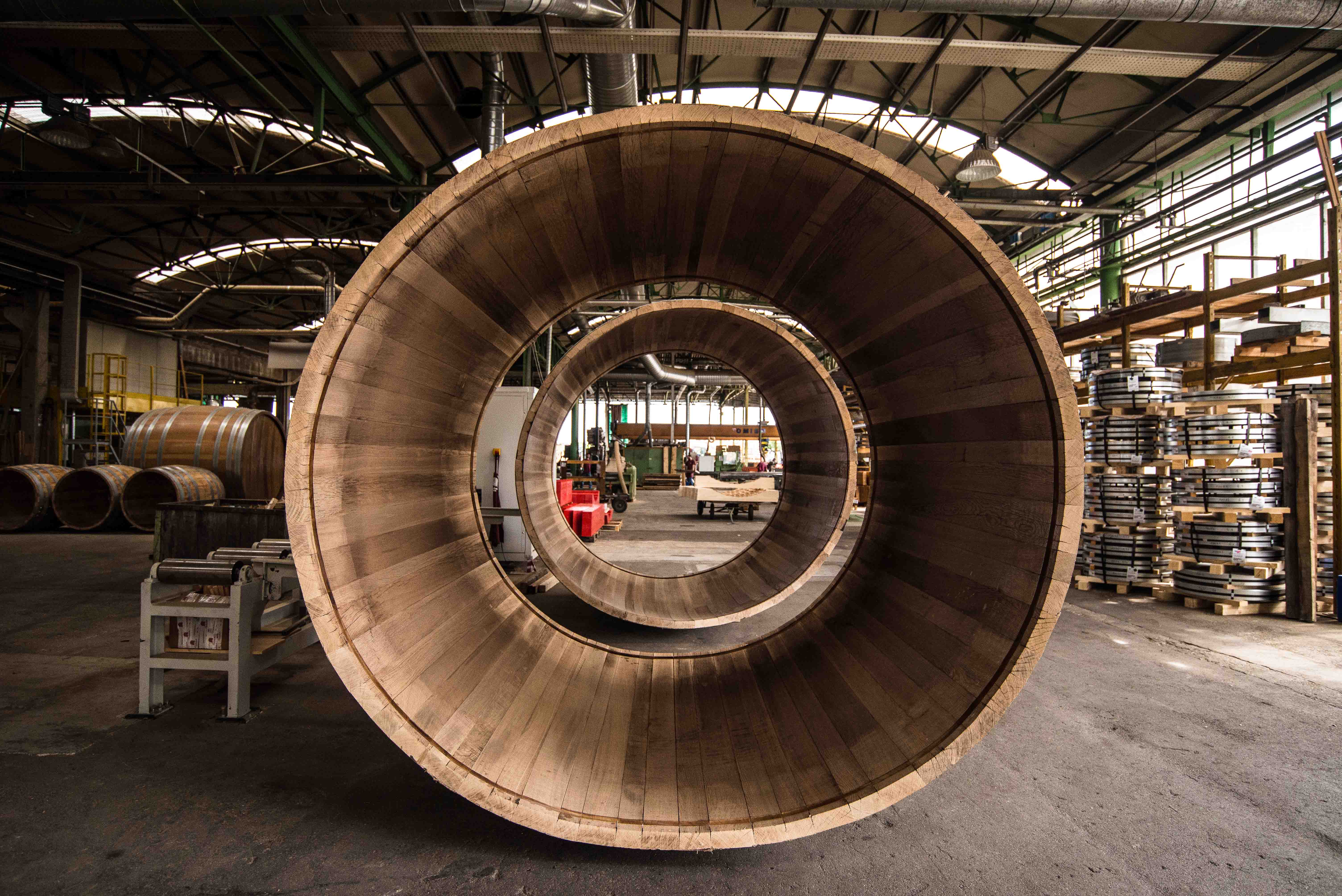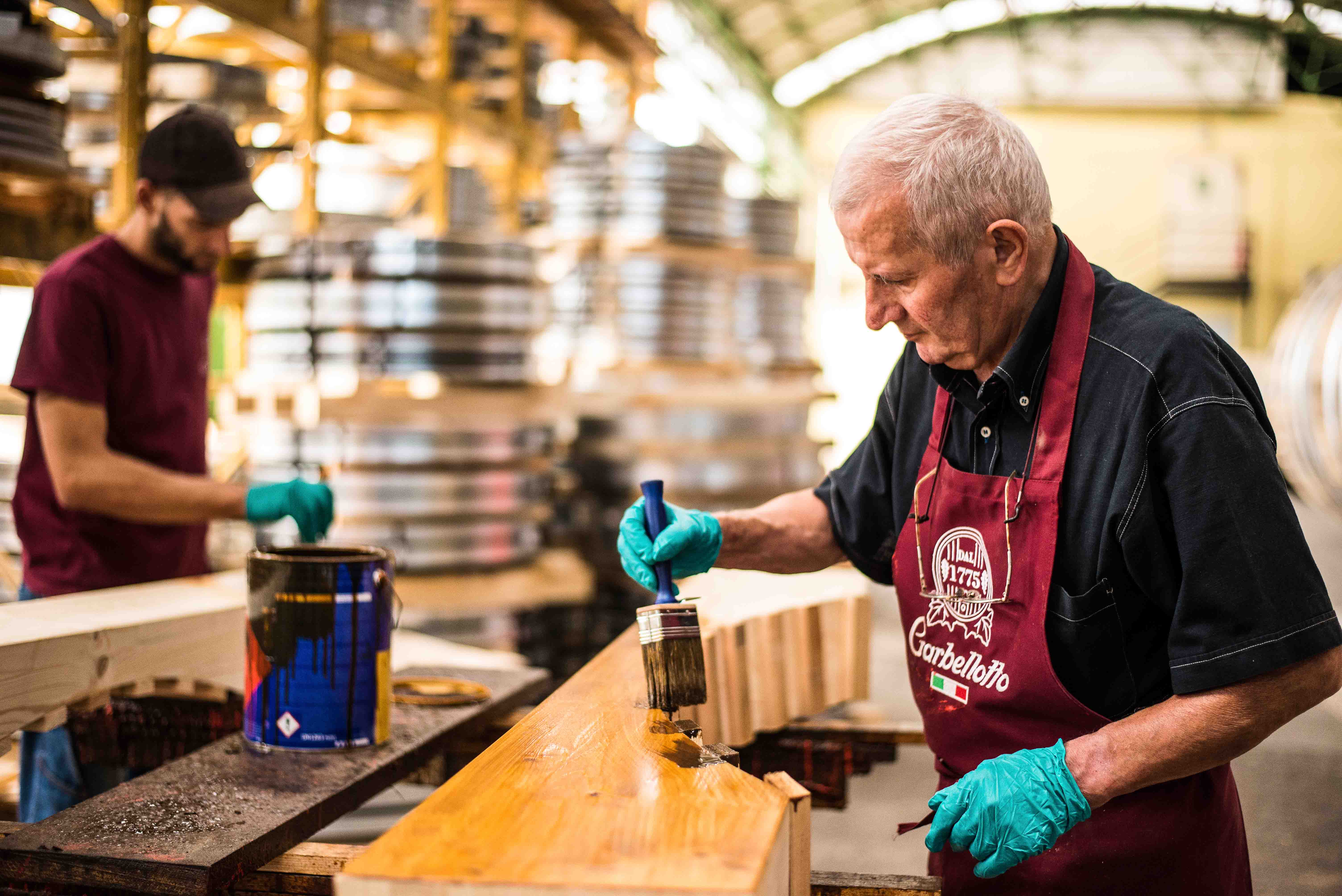Buono a sapersi
How is a barrel born?
10/10/2016

The production of barrels is still an art form with a high degree of craftsmanship. The barrel-maker or cooper, like a tailor, models the wood with movements born of old and with attention to the smallest of details. Here we tell you step by step how a barrel is made.
The History of Barrels
The barrel originated as a container for preserving things and for transport, thanks to its rounded shape and the ease with which it can be rolled and turned. The Celts were the first to replace clay amphorae with a more practical and manageable vessel. With time it was understood that wine, vinegar or grappa and other alcoholic products can be refined and their sensory properties enhanced by being placed in a barrel. Wood is a natural container which is penetrated by small amounts of oxygen thus allowing its contents to breathe, but which also releases tannins, so-called "gallic" tannins, and, to a greater or lesser extent, spicy and sweet aromas. Wood can also make colours change, white wines taking on golden tonalities and red wines more intense shades.
 Choosing the right wood
Choosing the right wood
The most important decision in the making of a barrel is the choice of wood to use and its aging. What do we need? The material has to be tough but porous, it has to release its natural elements into the wine but without being too aggressive and it has to last for a long time. Palm wood, walnut, silver fir, cherry wood, chestnut, acacia, ash; every local community used the wood it had available to it, but in the end oak turned out to be the most suitable material because it was stable and easier to work.
Just as important is the origin of the wood. The masters of wood managed to map out all the world's forests. Italian oak isn't really any good for barrel- making or cooperage. The wood normally comes directly from the European forests of Slavonia-Bosnia, from the French Massif Central and central Europe or from America.

Ageing the wood
What should the ideal tree be like? It should be healthy with a straight trunk, without knots or branching, be at least 100 to 150 years old, old and wise; these are its essential qualities. The first step in working the wood is to take long pieces of wood from the tree. 50% of the wood is discarded and only the internal, heart of the trunk is kept, the most precious and workable part. From this the staves are obtained, in other words the long pieces of wood which when they all put together, form the barrel.
To be able to be used, however, these rough staves have to be aged. Stacked one on top of the other to form tiers they remain exposed to rain and the elements for up to five years. This is natural aging in which much of the wood's dampness is eliminated, but without drying out, a slow process which respects the rhythms and cycles of nature. For every centimetre of wood at least eight months' aging is needed!

From wood to the barrel
The method of construction has remained the same down the years: essentially only two materials are needed, wooden staves and iron hoops together with long experience and attention to detail. Everything being at once very simple and very complex.
After aging, the staves are again finished and shaped, broader in the middle and thinner at the ends and hollowed slightly on the inside so that once they are placed side by side they adhere completely and don't let the contents seep out. The staves are now ready to be made into a barrel.

The most fascinating and critical part of the process now starts, the toasting. The staves are placed one next to the other and round a direct flame. A classic and spectacular image. The flame heats and bends the wood and makes it malleable and at the same time transforms the chemical elements in the staves.
 Finishing
Finishing
The staves having been made pliable by the heat are now ready to be assembled into the final barrel. The craftsmen hammer the hoops into place round the staves with great coordination and musical rhythm.
Once the body of the barrel has been formed, the container has to be closed at both ends by the heads. The staves are bent backwards allowing the heads to fit neatly into the croze or groove which has been carefully carved into the top and bottom of the staves forming a natural watertight seal which also allows the wood to breathe.

The barrel is now finished! After final tests of impermeability, it is ready to play host to our wine and help it on its way to refining and aging.
Barrel and Barrique: what's the difference?
By the word barrique we mean a small barrel of 225 litres (bordeaux barrique) or 228 litres (burgundy barrique), by barrel we usually mean a larger container. The barrique is the traditional measure in France. This also reminds us that the origin of the word "barricade" goes back to the French revolution when barrels filled with earth were used to make "barricades" against the advance of the army.
So the barrique has a lower interior volume than a barrel and this means a proportionately greater surface of wood is in contact with a proportionately lower quantity of wine and with a consequently greater effect on the wine.
So welcome to the fascinating world of barrels; would you like to try our wines that have been skillfully aged in these vats?
Read others post









